Adhoc Analysis Filter Conditions
By following this document user will know how to use Filter Conditions in Adhoc Analysis.
Prerequisites
For this example we are using Analysis Filter.pipeline dataset
Download dependency file from link given Link. After downloading the file, upload Analysis Filter.pipeline into the AIV dataset section.
Skill Level Required
No prior knowledge of Adhoc Analysis required but knowladge of binary filter conditions will be advantageous. Click here to know more about Adhoc Analysis in detail.
Use Filter Condition
Logging In
- Log in to your AIV application using your valid credentials.
Creating a New Analysis
-
Navigate to the hamburger menu > Document > Adhoc Analysis, and click on the + icon to create a new analysis:
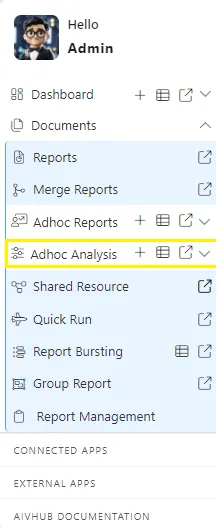
-
Upon clicking “Create Analysis”, the Analysis Selection dialog box will appear:
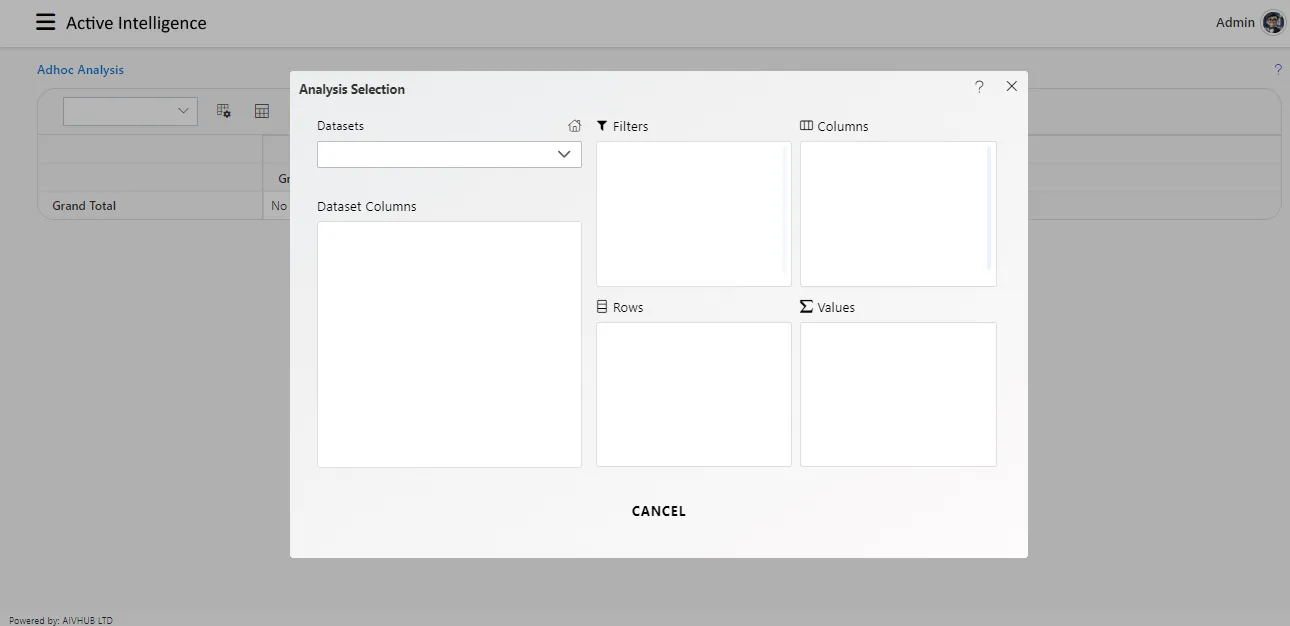
-
Fill in the details in the Analysis Selection window as shown:
- Datasets: Analysis Filter
- Rows: country
- Columns: productLine
- Values: quantityOrdered (Type: Count)
- Filters: QuantityOrdered
Equal Condition
The Equal filter is used to find exact matches. This filter provides only a list box instead of a multi-select. For multiple values, use the IN condition.
-
Go to the settings icon at the Filters option and fill in the details:
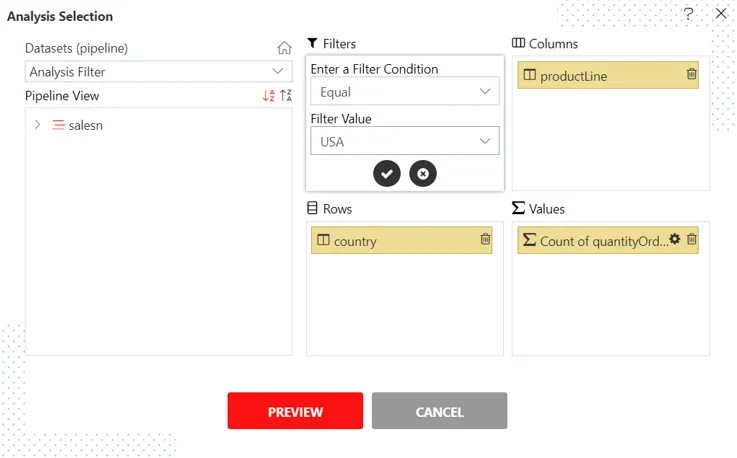
-
Click on the ✓ icon and then the PREVIEW button.
-
Upon clicking the CANCEL button, the window will look as follows:

NOT Equal Condition
The NOT Equal filter works opposite to the Equal filter, excluding the condition and value applied and displaying the remaining values. It provides only a list box instead of a multi-select. For multiple values, use the NOT IN condition.
-
Go to the settings icon at the Filters option and fill in the details:
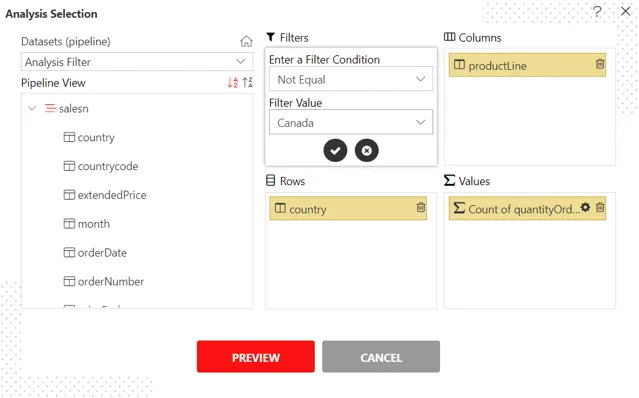
-
Click on the ✓ icon and then the PREVIEW button.
-
Upon clicking the CANCEL button, the window will look as follows:
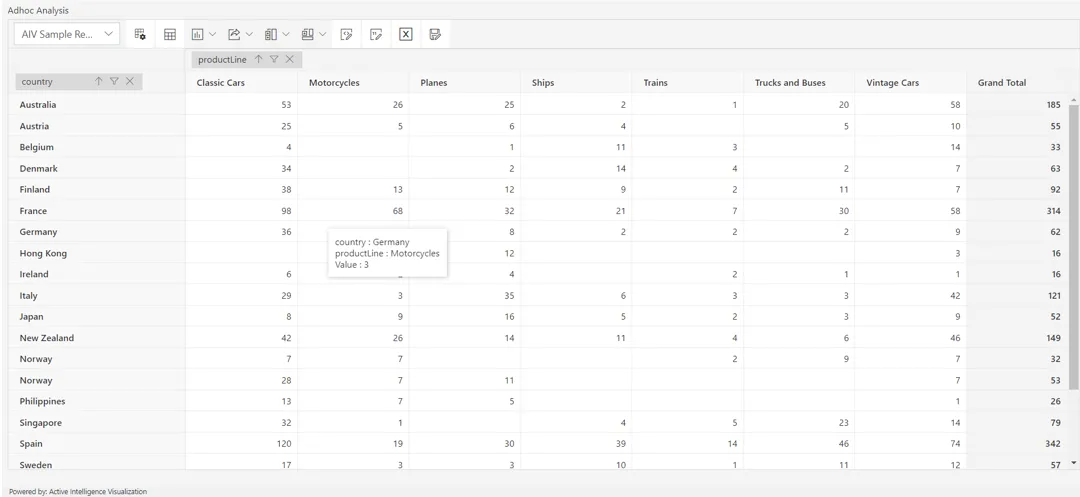
IN Condition
The IN condition allows users to check if an expression matches any value in a list of selected values. This condition provides a multi-select dropdown, enabling the selection of multiple values.
-
Click on the settings icon at the Filters option:
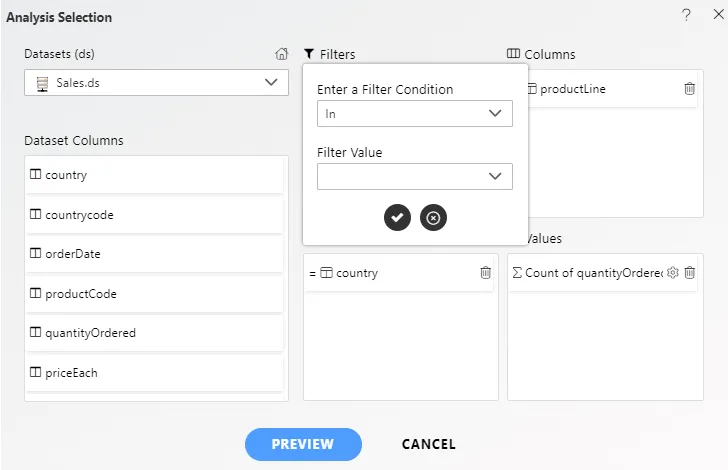
-
Click on the ✓ icon and then the PREVIEW button.
-
Upon clicking the CANCEL button, the window will look as follows:
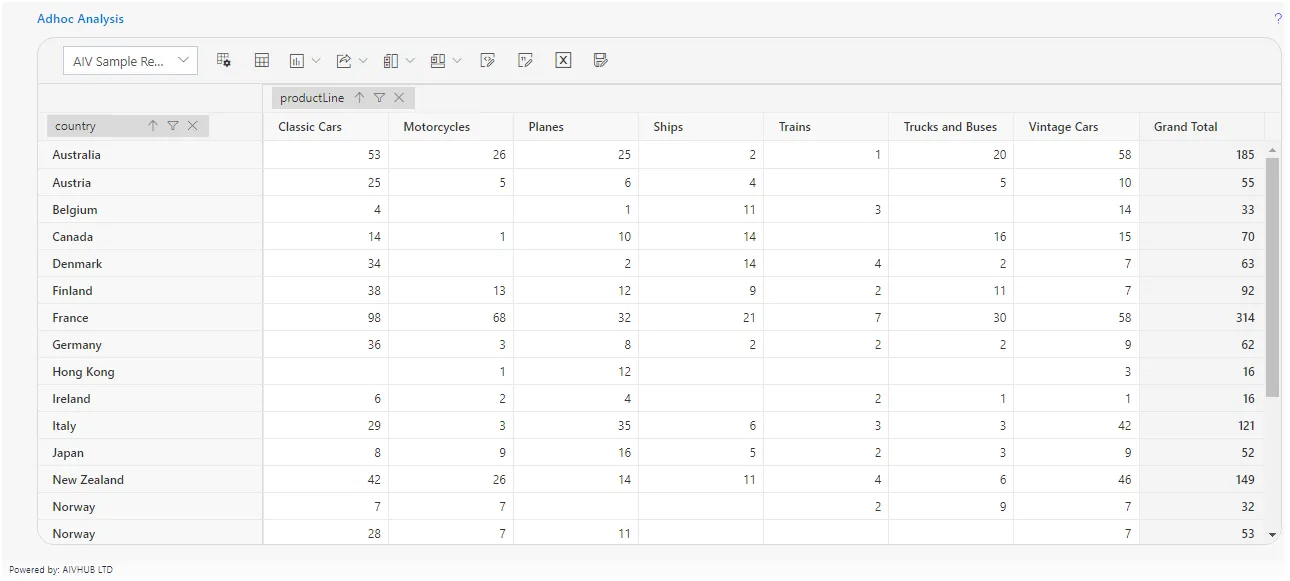
NOT IN Condition
The NOT IN condition displays values that do not match the selected values, working opposite to the IN condition.
-
Go to the settings icon at the Filters option as in step 5 and fill in the details:

-
Click on the ✓ icon and then the PREVIEW button.
-
Upon clicking the CANCEL button, the window will look as follows:
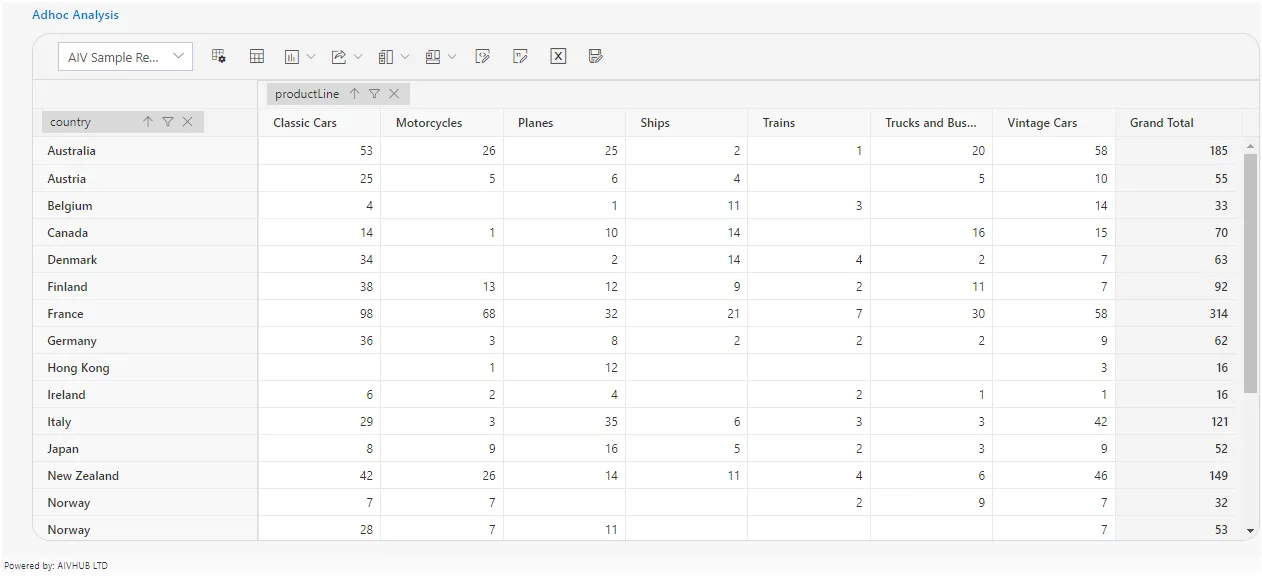
- Results will be returned except for the selected values.
Greater Than Condition
The Greater Than condition is used to see values greater than the entered value. Users will have a blank text box to manually enter the required value.
-
Go to the settings icon at the Filters option and enter the filter values:
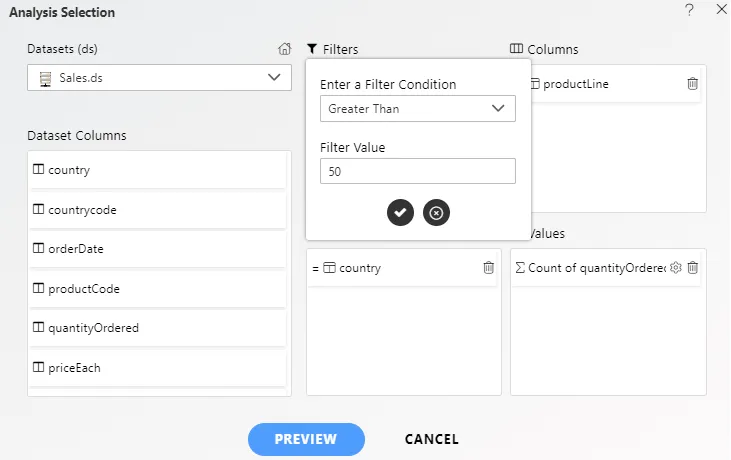
-
Click on the ✓ icon and then the PREVIEW button.
-
Upon clicking the CANCEL button, the window will look as follows:
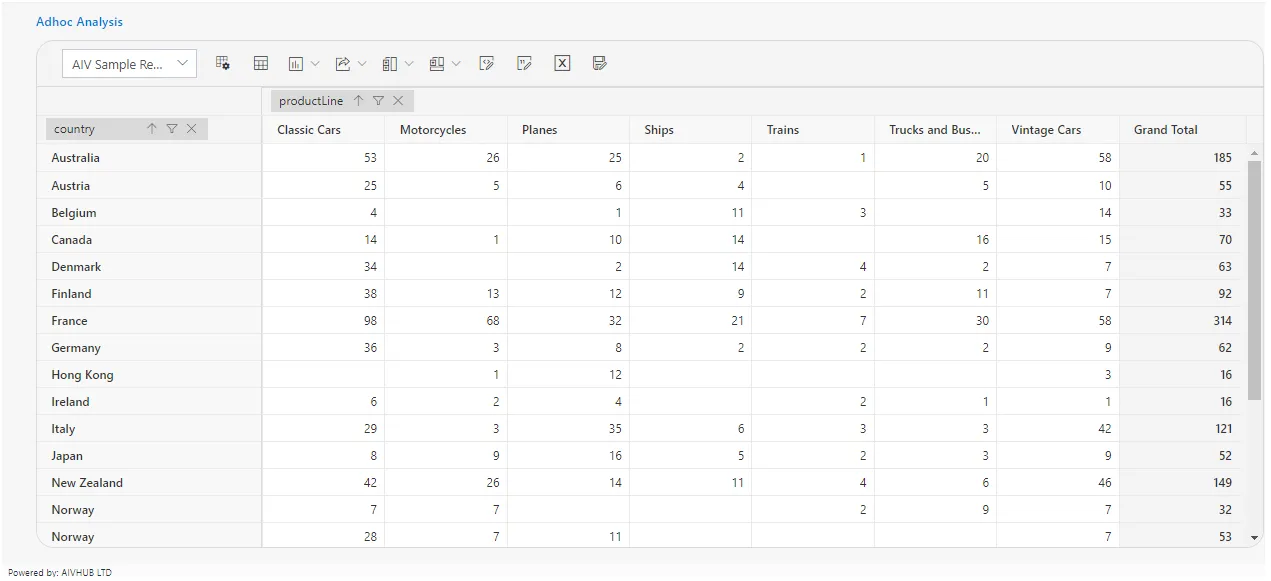
- Data displayed is greater than the applied condition value.
Less Than Condition
The Less Than condition is used to see values less than the entered value. Users will have a blank text box to manually enter the required value.
-
Go to the settings icon at the Filters option and enter the filter values:
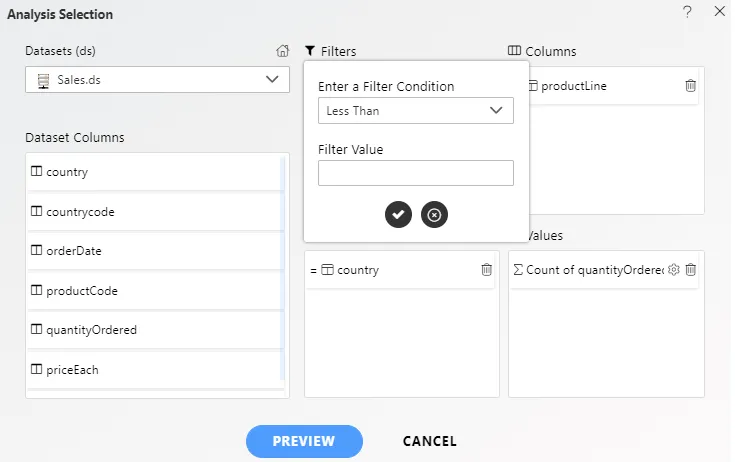
-
Click on the ✓ icon and then the PREVIEW button.
-
Upon clicking the CANCEL button, the window will look as follows:
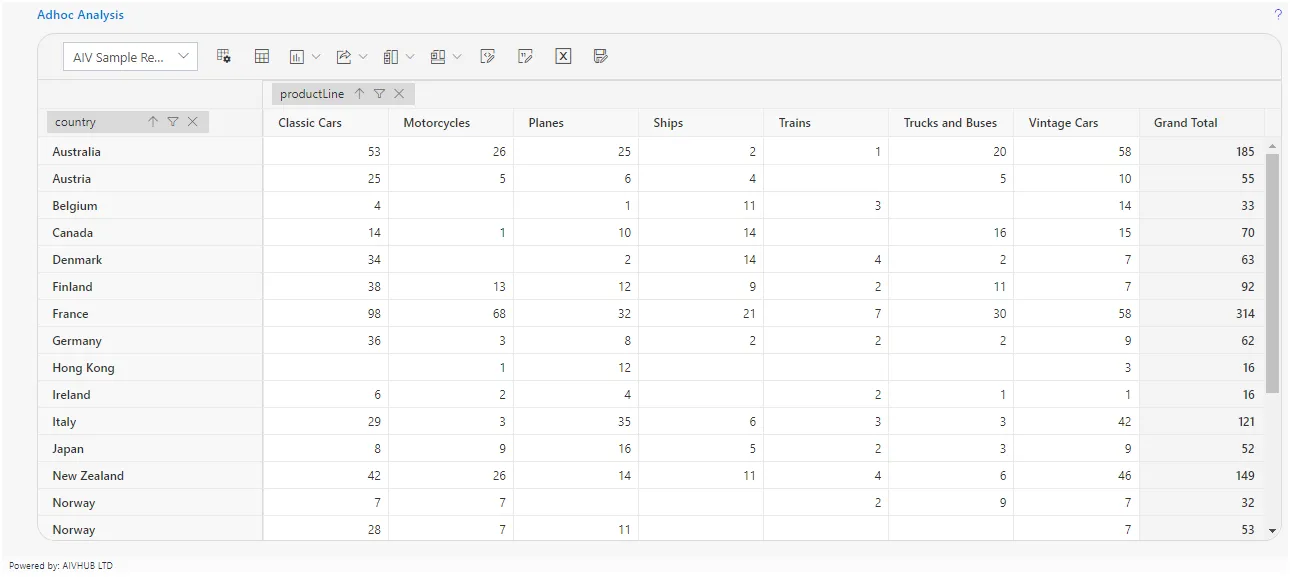
- Data displayed is less than the applied condition value.
NOT LIKE Condition
The NOT LIKE condition works opposite to the LIKE condition, filtering out the selected value and showing remaining values.
-
Go to the settings icon at the Filters option, select the NOT LIKE condition, and fill in the details:
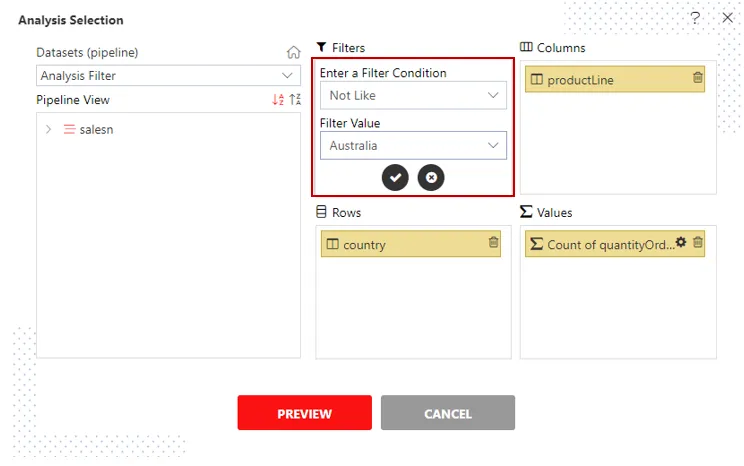
-
Click on the ✓ icon and then the PREVIEW button.
-
Upon clicking the CANCEL button, the window will look as follows:
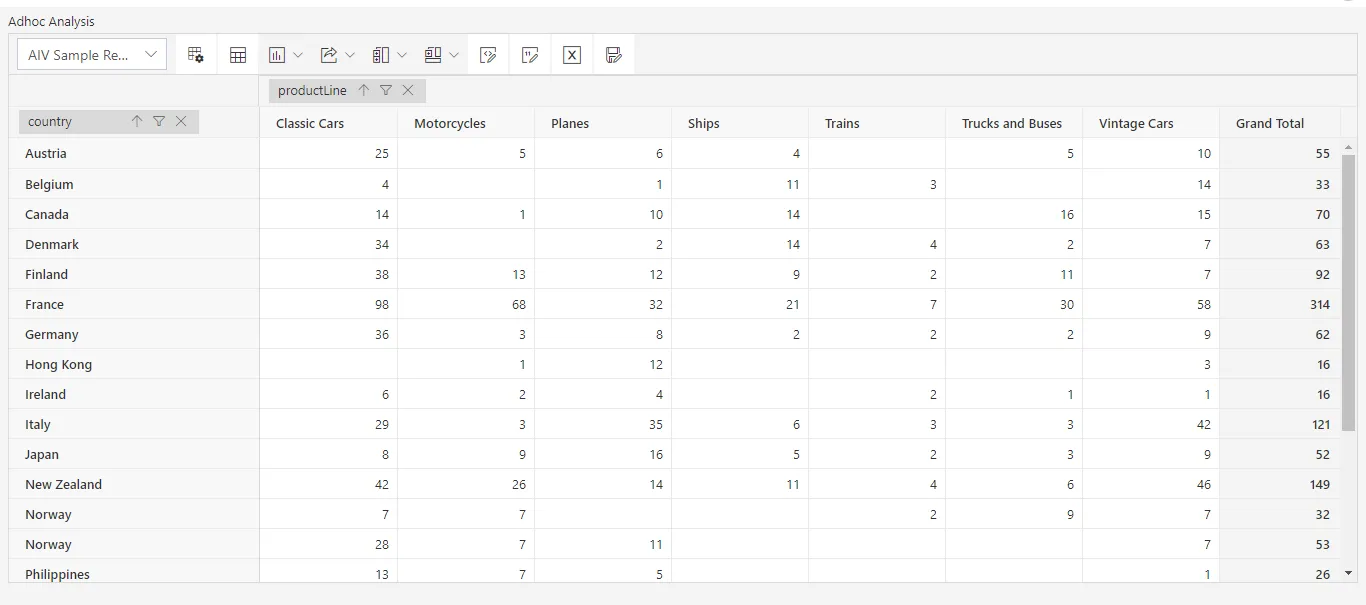
- Data for Australia will be filtered out as per the selected condition.
Greater Than or Equal To Condition
The Greater Than or Equal To condition works like the Greater Than condition, with the addition that it includes the selected value.
Less Than or Equal To Condition
The Less Than or Equal To condition works like the Less Than condition, with the addition that it includes the selected value.